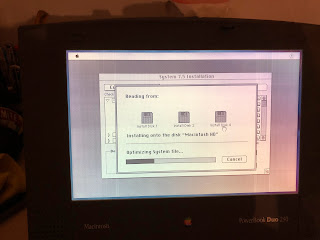 |
| This is scary - where's my data ? |
Background
So what went wrong ?
What's in the backups ?
clive@BBComp Special measures % file */*
2024-0105-225736/DoshNsav_Trackers_piv.xlsx: CDFV2 Encrypted
2024-0105-225736/DoshNsav_pivZ.xlsx: Composite Document File V2 Document, Cannot read short stream
2024-0105-225736/FinanceDocs_2024-0105-225736.sparseimage: data
2024-0201-071633/DoshNsav_Trackers_piv.xlsx: CDFV2 Encrypted
2024-0201-071633/DoshNsav_pivZ.xlsx: CDFV2 Encrypted
2024-0201-071633/FinanceDocs_2024-0201.sparseimage: data
2024-0303-085151/DoshNsav_Trackers_piv-2024-0303-08515_OK.xlsx: Microsoft Excel 2007+
2024-0303-085151/DoshNsav_Trackers_piv.xlsx: CDFV2 Encrypted
2024-0303-085151/DoshNsav_pivZ.xlsx: CDFV2 Encrypted
2024-0303-085151/FinanceDocs_2024-0303-08515.sparseimage: data
2024-0314-153641/DoshNsav_Trackers_piv.xlsx: CDFV2 Encrypted
2024-0314-153641/DoshNsav_pivZ.xlsx: Apple Desktop Services Store
2024-0314-153641/FinanceDocs-2024-0314-153641.sparseimage: data
2024-0320-065313/DoshNsav_Trackers_piv.xlsx: CDFV2 Encrypted
2024-0320-065313/DoshNsav_pivZ.xlsx: Apple Desktop Services Store
2024-0320-065313/FinanceDocs_2024-0320-065313.sparseimage: data
2024-0324-011945/DoshNsav_Trackers_piv.xlsx: Apple Desktop Services Store
2024-0324-011945/DoshNsav_pivZ.xlsx: Apple Desktop Services Store
2024-0324-011945/FinanceDocs_2024-0324-011945.sparseimage: data
2024-0327-134121/DoshNsav_Trackers_piv.xlsx: Apple Desktop Services Store
2024-0327-134121/DoshNsav_pivZ.xlsx: CDFV2 Encrypted
2024-0327-134121/FinanceDocs-2024-0327-134121.sparseimage: data
2024-0331-214023/DoshNsav_Trackers_piv.xlsx: Apple Desktop Services Store
2024-0331-214023/DoshNsav_pivZ.xlsx: CDFV2 Encrypted
2024-0331-214023/FinanceDocs_2024-0331-214023.sparseimage: data
2024-0401-211118_MMlast/DoshNsav_Trackers_piv.xlsx: Apple Desktop Services Store
2024-0401-211118_MMlast/DoshNsav_pivZ.xlsx: CDFV2 Encrypted
2024-0401-211118_MMlast/FinanceDocs-2024-0401-211118.sparseimage: data
2024-0402-082024_BBCFirst/DoshNsav_Trackers_piv.xlsx: Apple Desktop Services Store
2024-0402-082024_BBCFirst/DoshNsav_pivZ.xlsx: CDFV2 Encrypted
2024-0402-082024_BBCFirst/FinanceDocs_2404-0402-082024_BBCFIRST.sparseimage: data
2024-0415-000021/DoshNsav_Trackers_piv.xlsx: Apple Desktop Services Store
2024-0415-000021/DoshNsav_pivZ.xlsx: CDFV2 Encrypted
2024-0415-000021/FinanceDocs_2024-0415-000021.sparseimage: data
Who needs to fix this ?
- This is a strange one. It appears the attributes of the Excel file have been lost / changed or misinterpreted.
- It's very hard to spot when this has occurred as there is no external visible marker (except the unix file type) as if an Excel is in password protected format or not.
- Some file types are identified by the dot3 or four letters on the end others are identified by data markers within the file. Excel appears to use a combination of both to identify whether a file has a password encryption or not.
- AAAARGH lucky I have backups and know how to use them.












































